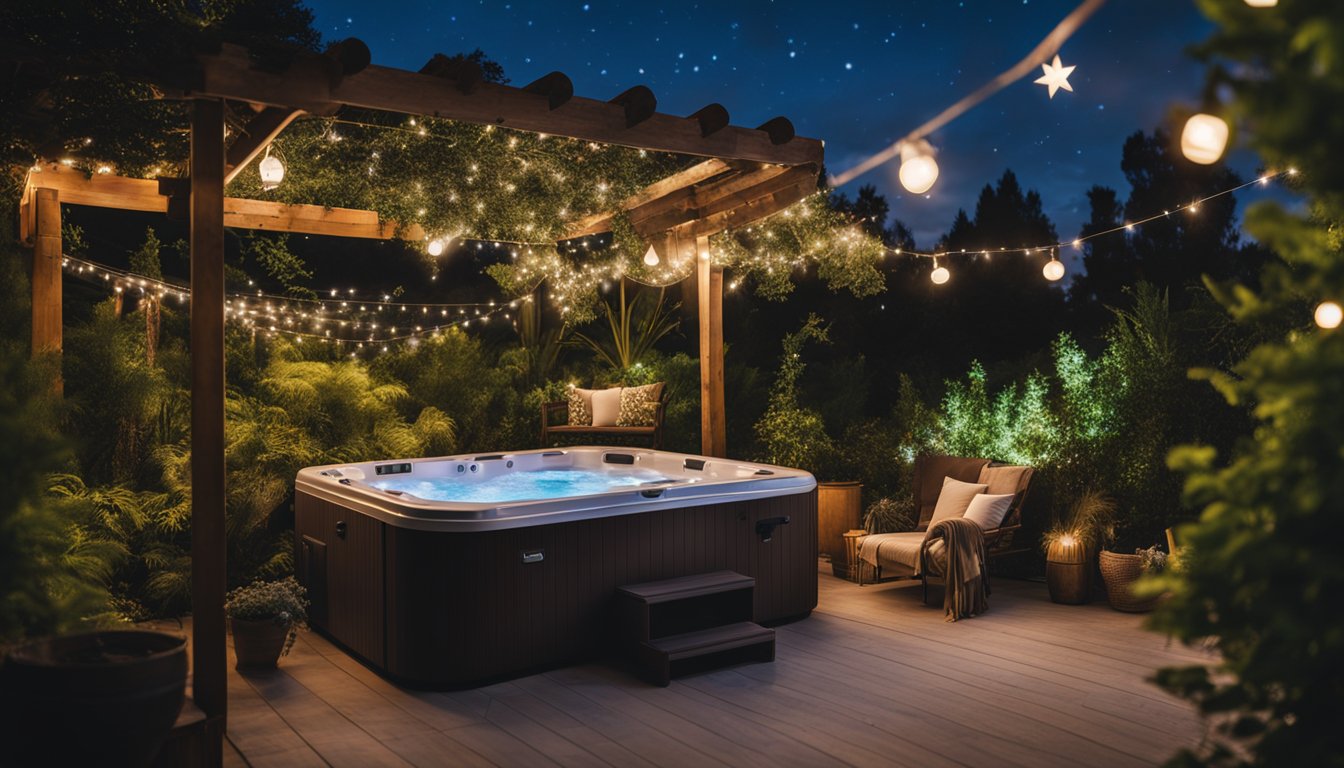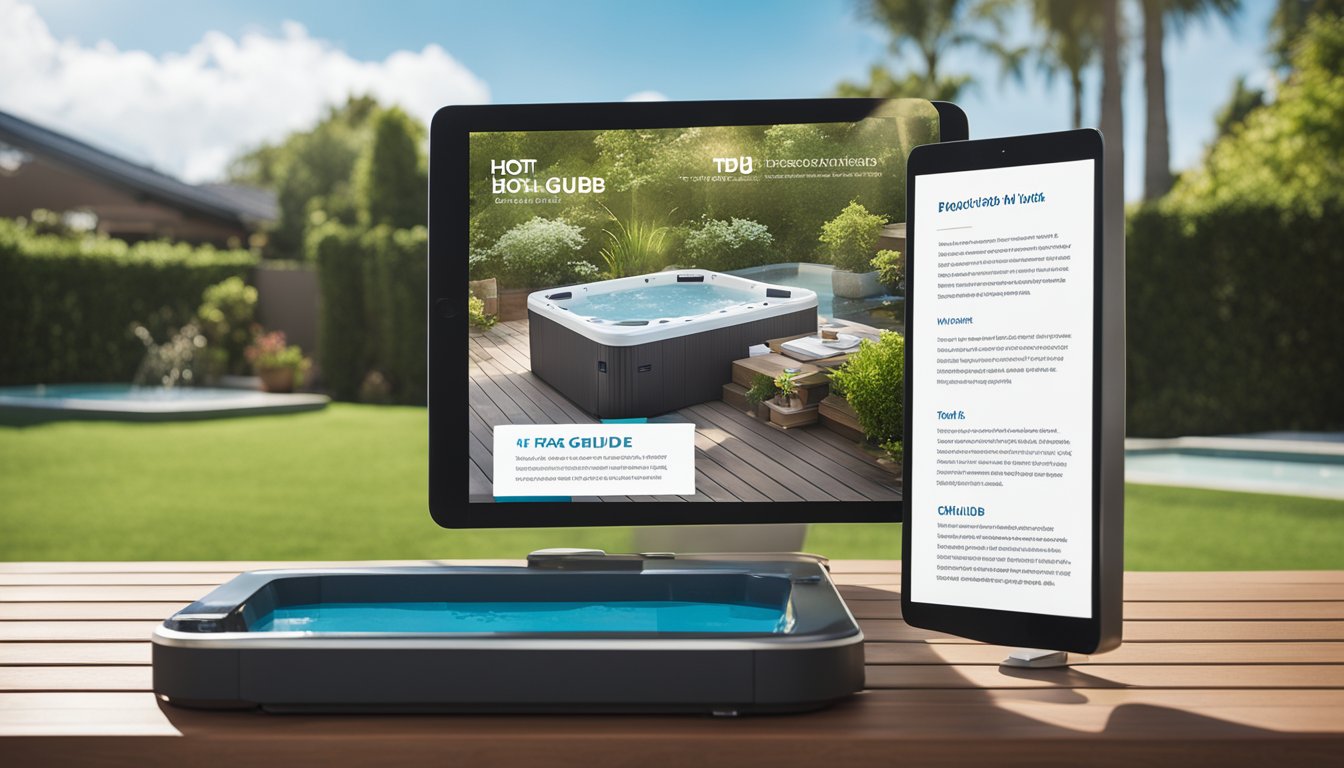Late updated: 06 Aug 2024 09:08
Written by: James Whitaker
Hot Tub Buying Guide For Beginners: Essential Tips for First-Time Buyers
Thinking about upgrading your lifestyle with a hot tub? You're not alone. Many of us crave that perfect blend of luxury and relaxation, and a hot tub could be the ideal addition to make that dream a reality. With a variety of features and price points to consider, finding the right hot tub for your needs can be a rewarding journey.

Budget is crucial when selecting the right hot tub for you. From basic models costing around £3,000 to luxury options exceeding £15,000, it's important to determine what you can afford and what features you cannot do without. Remember, hidden costs such as installation, delivery, and ongoing maintenance are just as important to consider, so plan ahead to maximise your investment.
Maintenance might seem daunting, but it's all about regular care to keep your hot tub in peak condition. Simple tasks like balancing pH levels, adding calcium hardness increaser, and regular shock treatments can ensure that your investment remains a source of pleasure rather than stress. A well-maintained hot tub doesn't just enhance your home; it offers enduring health benefits and unparalleled relaxation.
Key Takeaways
- Determine your budget and feature needs before purchasing.
- Regular maintenance is essential for longevity and enjoyment.
- A thoughtfully selected hot tub can provide significant relaxation and health benefits.
Determining Your Needs and Budget

Choosing the right hot tub involves considering various factors, including types and features, placement and installation, as well as budget and financing options. By addressing these key aspects, we can ensure a well-informed decision that fits our needs and financial capabilities.
Understanding Hot Tub Types and Features
Hot tubs come in various types, such as above-ground, in-ground, portable, rotomolded, and acrylic. Each type has distinct advantages. For example, above-ground hot tubs are easier and cheaper to install, while in-ground hot tubs offer a more permanent and integrated look.
Features to consider include jets, lounge seats, and water features. More powerful jets provide better pain relief and relaxation. Some models come with advanced features like LED lighting and Bluetooth speakers, enhancing the overall experience. Knowing the materials, such as acrylic versus vinyl, can also guide us towards better durability and comfort.
Assessing Placement and Installation Requirements
Where we place our hot tub can significantly impact both the installation process and cost. Options include backyard decks, patios, or even indoors. Each location has its specific considerations.
Outdoor installations might require a solid foundation, such as a concrete slab, and adequate plumbing and electrical work. Indoor setups need proper ventilation and room for maintenance access. We should also think about the ease of delivery and installation, especially if a crane is required for difficult-to-reach locations. Additionally, installation costs vary, with simple moves costing around £200, while more complex installations can reach up to £1,500.
Setting a Budget and Exploring Financing Options
Determining our budget is crucial. Hot tubs come in various price ranges, typically ranging from entry-level models at £2,000 to luxury models above £10,000. It’s essential to account for not just the initial cost but also ongoing maintenance costs, such as chemicals and utility bills.
Exploring financing options can make a higher-priced model more accessible. Many dealers offer payment plans and warranties to cover repairs and replacements, adding peace of mind. By setting a realistic budget and understanding financing options, we can choose a hot tub that aligns with our financial situation without compromising on features and quality.
Maintaining Your Hot Tub and Maximising Its Value
Proper maintenance is essential to keep your hot tub in top condition, ensuring its longevity and maximising value. Key aspects include managing water care, routine upkeep, and adding thoughtful accessories.
Understanding Water Care and Filtration Systems
To maintain high water quality, we need to pay close attention to both water care and the filtration system. Using pH balance and sanitation chemicals like chlorine or bromine ensures the water stays clean. Weekly water testing with test strips can identify imbalances early.
Regularly shocking the water helps in killing bacteria and breaking down organic matter. The hot tub's filter also needs consistent rinsing and occasional deep cleaning. A clean filter prevents cloudy water and algae blooms, which can affect both aesthetics and health benefits.
Routine Maintenance and Energy Efficiency
Regular maintenance keeps your hot tub looking good and running efficiently. Draining and deep cleaning the tub every 3-4 months removes accumulated dissolved solids that can strain the pump and other components.
In terms of energy efficiency, we recommend investing in insulated covers that retain heat, reducing energy consumption. Ensuring the water is properly balanced can also prevent the heater and pump from overworking, adding years to their lifespan and lowering electricity bills. An energy-efficient hot tub can significantly contribute to monthly savings.
Additional Considerations: Accessories, Upgrades, and Aesthetics
Accessories can enhance both the functionality and appeal of your hot tub. Hot tub covers are essential for protecting the water from debris and reducing heat loss. Adding lighting can not only improve safety but also elevate the atmosphere.
For added entertainment, consider waterproof speakers or a built-in sound system. Aesthetically, built-in seating and steps can add to the comfort. Investing in these additions not only enhances the experience but also maximises the value of the hot tub, making it a standout feature in your home.
Brands offering solid warranties provide peace of mind that maintenance and repairs are handled efficiently, thus preserving the hot tub’s value. With consistent upkeep and thoughtful enhancements, your hot tub will remain a worthwhile investment for years.
Frequently Asked Questions

We've compiled essential FAQs to help you make an informed decision about buying your first hot tub. Below, we address key considerations, features, maintenance tips, and more.
What should I consider before making my first hot tub purchase?
Before purchasing, assess where you'll place the hot tub and check your electrical panel to ensure compatibility. Also, research the cost of utility bills and maintenance supplies. It's wise to purchase between September and December for potential discounts.
What are the essential features to look for in a hot tub?
Focus on size, seating capacity, jet placement, and types of jets. Consider options like built-in lighting, sound systems, and water features. Ensure the controls are user-friendly, and look for energy-efficient models.
How often should I expect to perform maintenance on my hot tub?
We should clean the filters every two weeks and check water chemistry weekly. Draining and refilling the water should be done every three to four months. Regular inspections of the cover and shell will help prevent long-term issues.
What are the energy considerations when choosing between a 120V and a 240V hot tub?
120V hot tubs are easier to install, as they typically plug into standard outlets, but they may have lower heating capacities. 240V models heat water faster and have more powerful jets, but they usually need professional installation.
Should I opt for an inflatable hot tub or a built-in model?
Inflatable hot tubs are more affordable and portable, ideal for temporary use or smaller spaces. Built-in models, while pricier, offer better insulation, durability, and a range of customisation options, making them a long-term investment.
What are the common regrets of new hot tub owners that I should be aware of?
New owners often regret not considering ongoing maintenance costs and utility expenses. Others wish they had tested the seating and jet placement before purchasing. Buying without a trial can lead to dissatisfaction with comfort and functionality.
